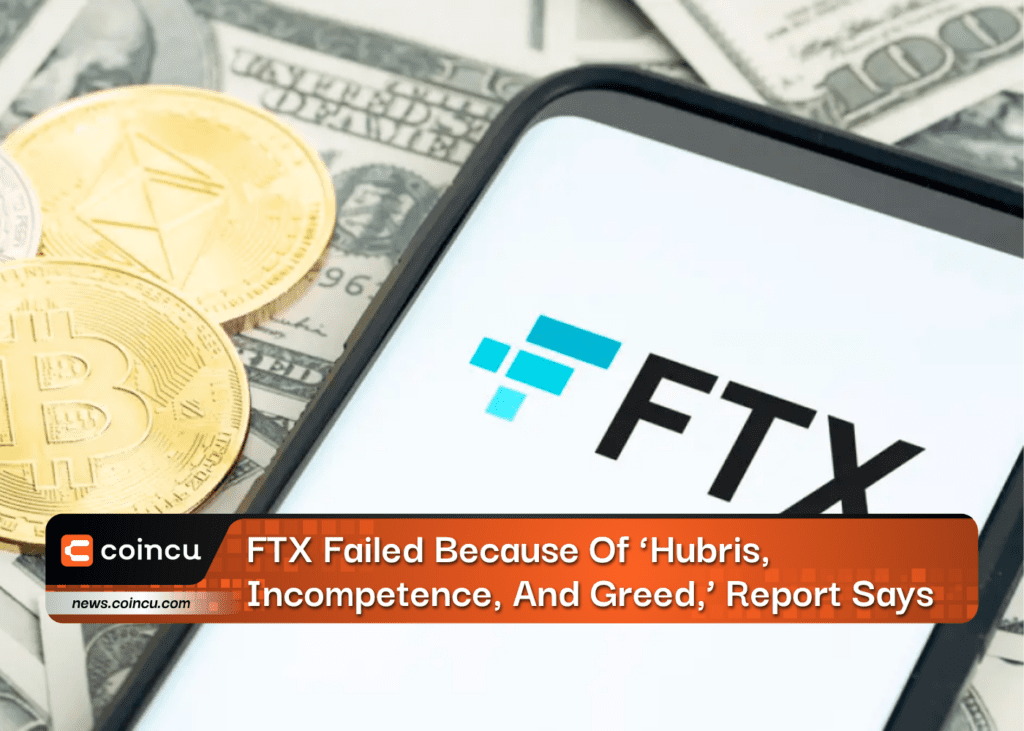Key Points:
- The first report from FTX Debtors was produced, mostly explaining the causes of the exchange’s collapse.
- The Debtors completed this task with the support of a legal and restructuring team.
- John J. Ray III said it would continue to report to provide more details.
FTX Debtors announced the publication of their first report, which details governance and control failures by the previous management team of FTX Group in critical areas such as management and asset management, finance and accounting, digital asset management, information security, and cybersecurity.

The report is based, among other things, on the Debtors’ examination of terabytes of electronic data and conversations, more than one million documents, and interviews with 19 former FTX Group workers. The Debtors carry out this job with the assistance of a team of legal, restructuring, forensic accounting, cybersecurity, computer engineering, cryptography, blockchain, and other expertise.
The first report preeminent the causes for FTX’s failure, such as SBF having the last say in all critical decisions; core staff having little risk management and operating experience soon after graduating from university.
According to the report, “hubris, incompetence, and greed” on the part of Bankman-Fried and senior personnel, notably former engineering director Nishad Singh and former chief technology officer Gary Wang, were at the core of FTX’s catastrophic failure.
“These individuals stifled dissent, commingled and misused corporate and customer funds, lied to third parties about their business, joked internally about their tendency to lose track of millions of dollars in assets, and thereby caused the FTX Group to collapse as swiftly as it had grown,” the report said.
Singh updated the code base on July 31, 2019, to enable Alameda to withdraw an infinite amount of crypto assets from the exchange, and a week later, to exempt Alameda from automatic liquidation; the FTX group maintained practically all crypto assets in hot wallets, and SBF then lied about utilizing the cold wallet. As a result of this, client assets were held by the exchange for a while.
Debt has now collected more than $1.4 billion in digital assets, identified another $1.7 billion in digital assets, and is in the process of recovery, with the company’s total liability estimated to be over $12 billion.
The FTX Debtors’ Chief Executive Officer and Chief Restructuring Officer, John J. Ray III, stated:
“We are releasing the first report in the spirit of transparency that we promised since the beginning of the Chapter 11 process. In this report, we provide details on our findings that FTX Group failed to implement appropriate controls in areas that were critical for safeguarding cash and crypto assets… We are continuing our efforts to review the events that factored into the fall of FTX and to identify and recover as much value as possible for debt.”
As Coincu reported, the teams in charge of the failed the exchange’s bankruptcy cases in the United States and the Bahamas agreed to cooperate. The arrangement is subject to approval by the United States Bankruptcy Court in Delaware and the Bahamas Supreme Court. Both parties agreed on a system for verifying inventory under their control and said that they were “confident” in the Bahamas Securities Commission’s competence to preserve digital assets.
DISCLAIMER: The Information on this website is provided as general market commentary and does not constitute investment advice. We encourage you to do your own research before investing.
Join us to keep track of news: https://linktr.ee/coincu
Harold
Coincu News





